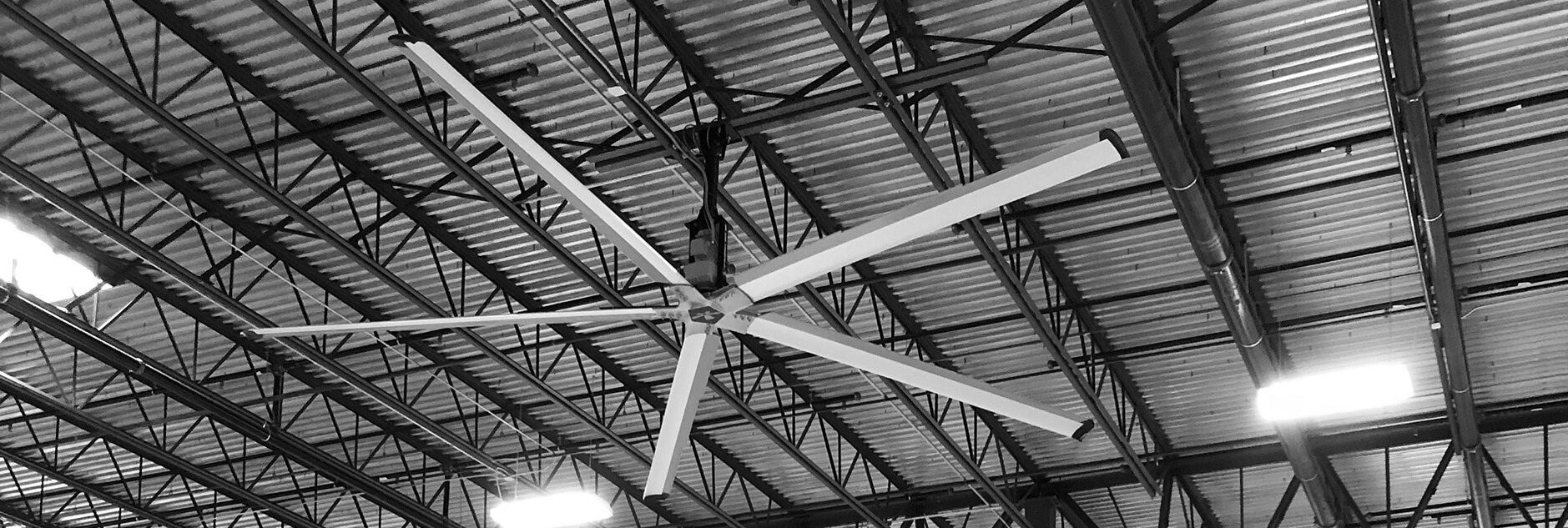How Fast Does Your Investment In HVLS Fans Pay For Itself?


For many companies, HVAC represents a significant chunk of monthly overhead. Improving the efficiency of your building’s heating, cooling and ventilation systems is therefore a great way to reduce costs and increase profitability. However, new HVAC equipment can be cost prohibitive to install, which means it may be years before the profits show on the books.
For many commercial and industrial sites, HVLS fans are one of the most cost-efficient and energy-efficient investments you can make. Here are some reasons why.
High-efficiency cooling and ventilation.
Compared to air conditioning, HVLS fans operate for pennies on the dollar. For example, our Z-Tech fan operates on just 3.15 amps and can move up to 425,000 cubic feet of air per minute, creating an evaporative cooling effect that makes the temperature feel up to 10 degrees cooler for up to 40,000 square feet of space. According to the Department of Energy & Environment, a commercial property can save up to 3 percent on its cooling bill for each degree higher set on the thermostat. A savings of 20 percent or more on the utility bill during the cooling season from installing HVLS fans is not unusual.
HVLS fans also blow away high-speed fans when it comes to performance, efficiency and ROI. Because it moves a single large column of air slowly, an HVLS fan puts far less energy into creating turbulence and vibration. This means lower energy bills and greater comfort.
Wintertime ROI.
Unlike most high-speed fans, HVLS fans work to reduce your utility bills all year. Indoor air tends to stratify in wintertime, especially in large spaces. It’s not uncommon for indoor air temperature differentials to reach 2.5 or more degrees per foot of vertical rise from floor to ceiling. Adjusting your HVLS fans to run in reverse sends warm air back down to floor level so you can keep employees and customers happy without spending a lot to heat empty space. In fact, doing so can save up to 30 percent on your winter heating bills, especially in cold climate areas.
Cut those maintenance and labor costs.
Energy efficiency is not the only way HVLS fans will save you money. They also require far less service than conventional high-speed fans, for two reasons.
HVLS fans run quietly with very little vibration, so parts don’t tend to wear; ours are virtually maintenance-free with an inspection interval of 8000 hours. Just one HVLS fan can replace 10 to 20 high-speed units, so you have far fewer fans to service. And, with our Ethernet-compatible controller, you can control up to 26 of our HVLS fans with the touch of a screen, rather than having to manually control them.
So, What’s The Payback?
Combine all these benefits and you could easily be looking at a payback period of less than two years. To know for sure, we’ll need to do a bit of analysis tailored to your situation. We’ll analyze your site, your current energy use and the specific VividAir products you are considering, and give you our best estimate for your ROI.
